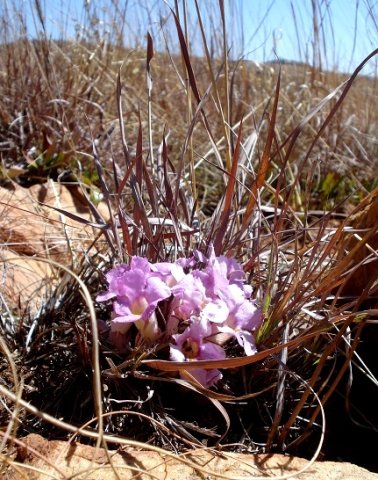Harveya pumila, an inkflower

Harveya pumila is a root parasite. It grows an underground attachment to the roots of a neighbouring grassy plant, from which it then extracts some nutrients produced or acquired by the host plant.
The Harveya genus comprises about 35 species, 12 of which occur in South Africa. Harveya plants are known as inkflowers. They turn black when drying, suggesting the use of the plant material for making writing ink, as was done in the past.
The rare and funny plants contribute to the effect that vegetation brings collectively. And it is forever watched, continually inspected. All eyes belong to entities that roam to eat, forever searching for food in the environment. Everything alive is edible; it eats or is eaten.
The plants of a biome create a habitat, which is more than food, shelter and other products. Habitat has an overall impact on the land. Not only the individual plants and animals are alive in it, but also the complex, open, living system itself.
The forever interacting, interdependent, constituent species that comprise the habitat, the ecological sustem as a whole, i.e. nature itself, is always renewing. Every part, big and small, is forever becoming something else, differentiating into more, or contracting into less (Braam van Wyk, Geasphere Conference, Nov 2006; JSTOR; iSpot).

